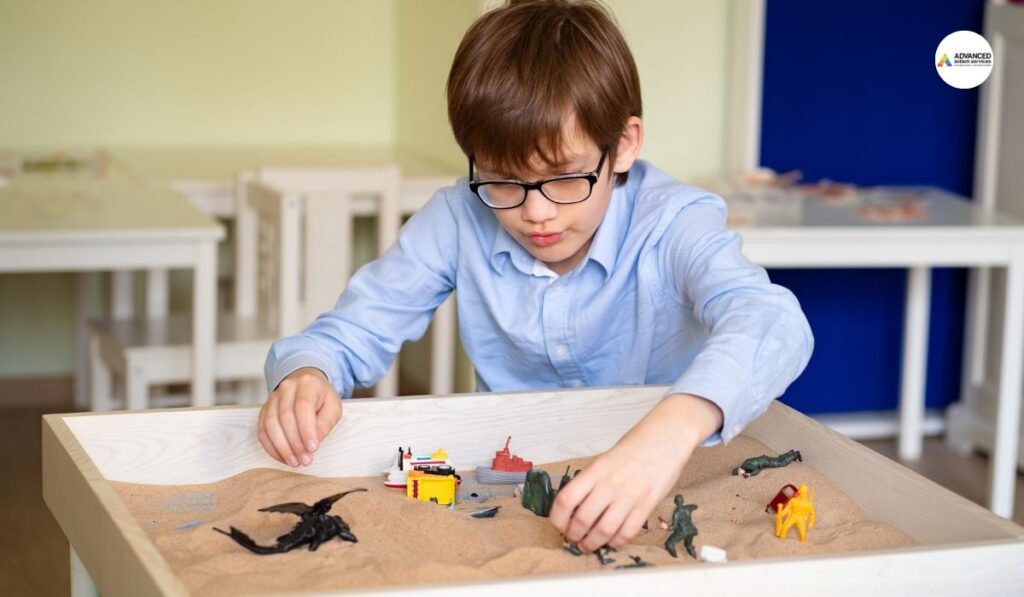Parenting a child with autism can be a challenging yet rewarding journey, especially when it comes to supporting their education. Children with autism spectrum disorder (ASD) often have unique learning needs and may require tailored strategies to thrive in an educational environment. As a parent, understanding how to effectively support your child’s education is crucial for their academic and personal development. This guide aims to provide parents with practical tips and strategies to support their child with autism in their educational journey.
Understanding Autism Spectrum Disorder (ASD):
Autism spectrum disorder is a neurodevelopmental disorder characterized by challenges in social communication and interaction, as well as restricted interests and repetitive behaviors. Children with autism may also exhibit sensory sensitivities and difficulties in processing information. Parents need to understand that autism is a spectrum disorder, meaning that each child with autism is unique and may have varying strengths and challenges.
Creating a Supportive Learning Environment:
One of the foundational pillars of facilitating your child’s educational journey is the establishment of a nurturing and conducive learning atmosphere within the home. Beyond the mere provision of resources, it entails the cultivation of structured routines, the dissemination of clear and comprehensible instructions, and the conscientious reduction of potential distractions. To fortify this environment, it’s essential to carve out a designated study area distinguished by its tidiness and absence of sensory disturbances.
This sanctuary should serve as a sanctuary for focused engagement, promoting comfort and tranquility to bolster your child’s concentration and productivity. Additionally, infusing this space with elements of personalization and warmth can further enhance its appeal, fostering a sense of ownership and belonging conducive to effective learning. If you’re seeking specialized assistance, consider consulting an ABA therapy center for additional support.
Developing Individualized Education Plans (IEPs):
Individualized Education Plans (IEPs) play a crucial role in supporting children with autism by delineating tailored goals and strategies to meet their unique learning requirements. Collaborating closely with your child’s school and educators is paramount in crafting an encompassing IEP that comprehensively addresses their strengths, challenges, and areas for development. Regular and diligent review of the IEP ensures its ongoing relevance and effectiveness in meeting the evolving needs of your child. This collaborative approach fosters a supportive educational environment where your child can thrive and reach their full potential.
Utilizing Visual Supports:
Incorporating visual supports not only assists in clarifying tasks and routines but also fosters independence and autonomy in children with autism. These tools provide a tangible framework for understanding and navigating various social and academic situations, promoting a sense of confidence and self-assurance. Moreover, the consistent use of visual aids across different environments ensures continuity in support, reinforcing learning outcomes and facilitating the generalization of skills. By embracing visual support as an integral part of your child’s educational journey, you can empower them to thrive and succeed in diverse contexts.
Encouraging Communication and Social Skills:
Communication and social skills pose common challenges for children with autism. It’s essential to foster communication by supporting your child’s preferred mode, whether verbal, nonverbal, or through augmentative and alternative communication (AAC) devices. Create environments that offer opportunities for social interaction, such as structured playdates, participation in social skills groups, and engagement in extracurricular activities aligned with your child’s interests. By nurturing communication and social skills in diverse settings, you empower your child to navigate social interactions with confidence and build meaningful connections with others.
Implementing Sensory Strategies:
Recognizing and addressing sensory sensitivities is crucial for children with autism, as these sensitivities can significantly affect their ability to participate in learning activities. Take the time to identify your child’s specific sensory triggers and implement appropriate strategies to help them regulate their sensory experiences. This may involve incorporating sensory breaks into their routine, offering tools like fidget toys or weighted blankets to provide comfort, and establishing a sensory-friendly learning environment free from overwhelming stimuli. By proactively addressing sensory needs, you can create a supportive atmosphere where your child feels comfortable, focused, and ready to engage in meaningful learning experiences.
Fostering Independence and Self-Advocacy:
In addition to nurturing independence and self-advocacy, it’s crucial to provide opportunities for your child to practice these skills in various aspects of their life. Encourage them to make choices and take responsibility for their actions at home, in social settings, and within the community. Offer guidance and support as they navigate challenges, but also allow them the freedom to learn from their experiences and develop resilience. By fostering a sense of autonomy and self-confidence, you empower your child to navigate the complexities of the world with courage and determination, setting the stage for a fulfilling and successful future.
Furthermore, fostering independence and self-advocacy involves cultivating a growth mindset in your child, emphasizing the importance of perseverance and learning from setbacks. Encourage them to embrace challenges as opportunities for growth and celebrate their accomplishments, no matter how small. Provide ongoing support and encouragement as they embark on their journey towards self-discovery and self-advocacy.
Collaborating with Educators and Support Professionals:
Building a collaborative partnership with educators and support professionals also involves staying informed about your child’s progress and any changes in their needs. Regularly communicate with the school to stay updated on academic, behavioral, and social developments. Additionally, take advantage of available resources and workshops to enhance your understanding of autism and effective strategies for supporting your child’s education. By actively participating in your child’s educational journey and advocating for their needs, you can help create a cohesive support network that maximizes their potential for success in school and beyond. Remember, your involvement and dedication play a crucial role in shaping your child’s educational experience and overall well-being.
Conclusion:
Supporting the education of children with autism requires patience, understanding, and collaboration between parents, educators, and support professionals. By creating a supportive learning environment, developing individualized education plans, utilizing visual supports, encouraging communication and social skills, implementing sensory strategies, fostering independence and self-advocacy, and collaborating with educators and support professionals, parents can help their child with autism reach their full potential and succeed in school and beyond. Remember that every child with autism is unique, and what works for one child may not work for another. Stay flexible, be patient, and celebrate your child’s achievements along the way.
For more resources and support in helping your child with autism thrive, consider exploring ABA therapy services at Advanced Autism Center in Mesa, AZ.
FAQs
How can I create a supportive learning environment at home?
To create a supportive learning environment at home, you can establish structured routines, provide clear instructions, and minimize distractions. It’s also important to designate a quiet and comfortable study area free from sensory triggers.
What are Individualized Education Plans (IEPs) and why are they important?
Individualized Education Plans (IEPs) are personalized plans designed to address the unique learning needs of children with autism. They outline specific goals and strategies to support academic and personal development. Collaborating with your child’s school and educators to develop and review the IEP ensures tailored support.
How can visual support benefit children with autism?
Visual supports, such as picture schedules and social stories, can help children with autism better understand expectations, navigate routines, and improve communication skills. By incorporating visual aids, you provide a tangible framework for learning and promote independence.
What strategies can I use to encourage communication and social skills?
Encourage communication by supporting your child’s preferred mode, whether verbal or nonverbal. Provide opportunities for social interaction through structured playdates, social skills groups, and extracurricular activities aligned with their interests.
How do I address sensory sensitivities in children with autism?
Identify your child’s specific sensory triggers and implement sensory strategies to help them regulate their experiences. This may include providing sensory breaks, using fidget toys, or creating a sensory-friendly environment free from overwhelming stimuli.
Why is fostering independence and self-advocacy important for children with autism?
Fostering independence and self-advocacy empowers children with autism to take charge of their learning journey and navigate challenges autonomously. By instilling a sense of ownership and self-confidence, you equip them with essential skills for lifelong success.
How can I collaborate effectively with educators and support professionals?
Maintain open communication with your child’s school and regularly participate in meetings and conferences. Stay informed about your child’s progress and advocate for their needs. Take advantage of available resources and workshops to enhance your understanding of autism and effective strategies for supporting your child’s education.
Are there specific dietary or nutritional considerations for children with autism?
While research on the relationship between diet and autism is ongoing, some parents and professionals advocate for certain dietary interventions, such as gluten-free or casein-free diets. It’s essential to consult with healthcare providers or nutritionists to determine if dietary modifications may be beneficial for your child.
What role does applied behavior analysis (ABA) therapy play in supporting children with autism?
ABA therapy is a widely used intervention for children with autism, focusing on behavior modification techniques to teach new skills and reduce challenging behaviors. It can be implemented in various settings, including schools, clinics, and homes, and is often tailored to meet the individual needs of each child.
How can I help my child transition between different environments or activities smoothly?
Transitioning between environments or activities can be challenging for children with autism. Establishing visual schedules, providing warnings, and using transition objects can help prepare your child for changes and ease the transition process. Additionally, practicing relaxation techniques or incorporating preferred activities during transitions can help reduce anxiety and promote a smoother transition experience.




